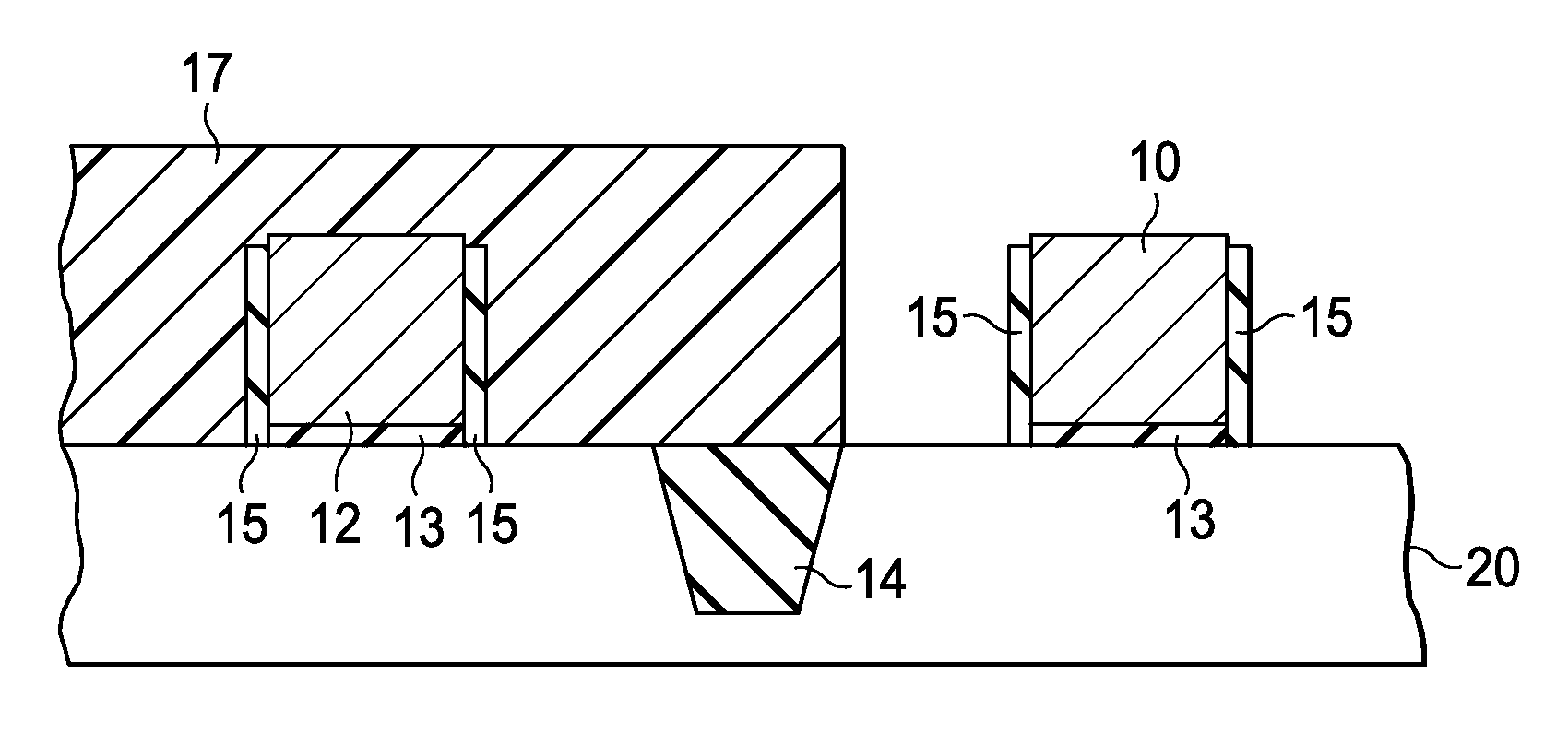Differential offset spacer
a technology of offset spacer and offset spacer, which is applied in the field of semiconductor device processing, can solve the problems of significant variability in transistors, degrade the stability of sram bit cells, and the conventional single spacer process does not provide flexibility with respect to the application/function of a given transistor (e.g. high voltage or speed),
- Summary
- Abstract
- Description
- Claims
- Application Information
AI Technical Summary
Benefits of technology
Problems solved by technology
Method used
Image
Examples
Embodiment Construction
[0015]The present invention will now be described with reference to the attached drawings, wherein like reference numerals are used to refer to like elements throughout. Embodiments of the invention provide differential offset spacers which enable optimizing the offset spacer for transistors based on its application / function or location in the circuit without requiring any extra patterning / masking layers. Thus, in one embodiment of the invention, a portion of both the PMOS and NMOS transistors are processed using a thicker offset spacer and a portion of both the PMOS and NMOS transistors are processed using a thinner offset spacer. The invention is broadly applicable to CMOS integrated circuits.
[0016]FIG. 1A-G shows successive cross sectional views during a process sequence to implement an integrated circuit having differential offset spacers according to an embodiment of the invention. FIG. 1A shows defined polysilicon gates 10 and 12 formed on substrate 20 having a semiconducting ...
PUM
 Login to View More
Login to View More Abstract
Description
Claims
Application Information
 Login to View More
Login to View More - R&D
- Intellectual Property
- Life Sciences
- Materials
- Tech Scout
- Unparalleled Data Quality
- Higher Quality Content
- 60% Fewer Hallucinations
Browse by: Latest US Patents, China's latest patents, Technical Efficacy Thesaurus, Application Domain, Technology Topic, Popular Technical Reports.
© 2025 PatSnap. All rights reserved.Legal|Privacy policy|Modern Slavery Act Transparency Statement|Sitemap|About US| Contact US: help@patsnap.com



